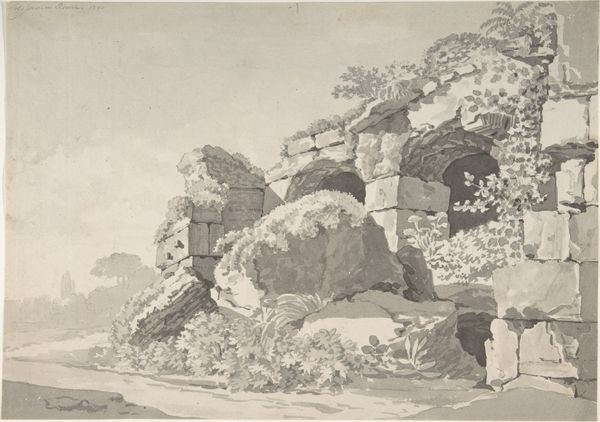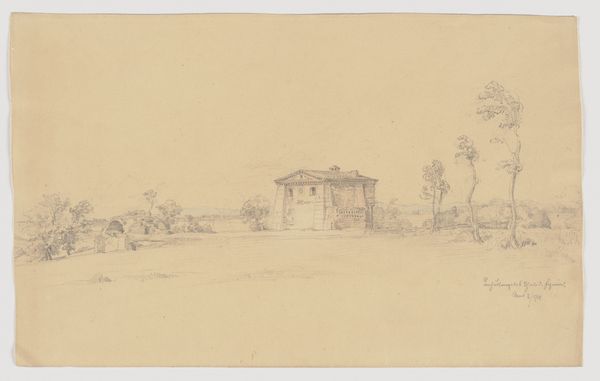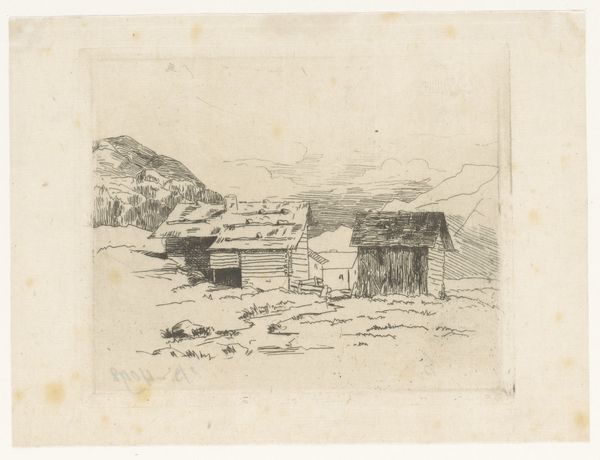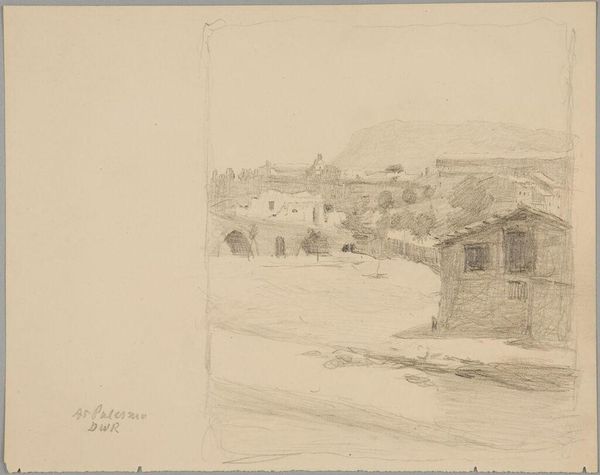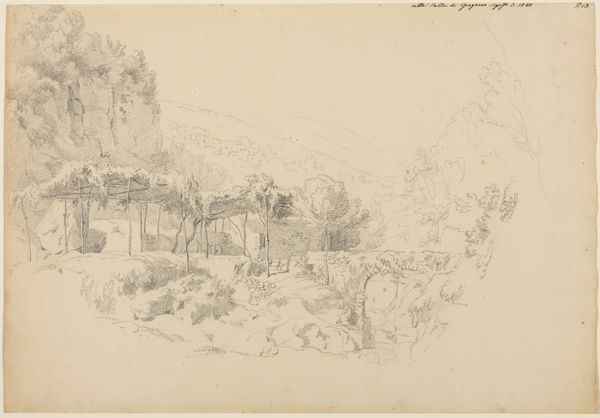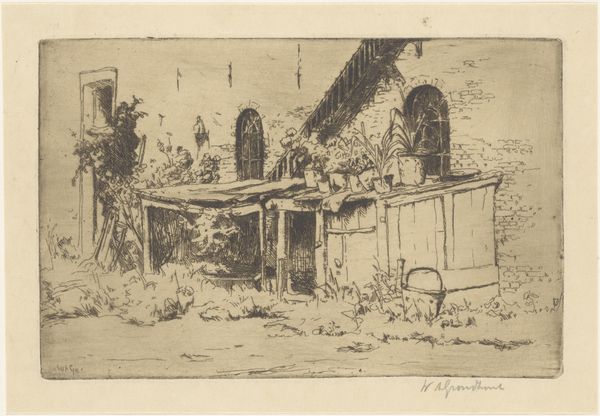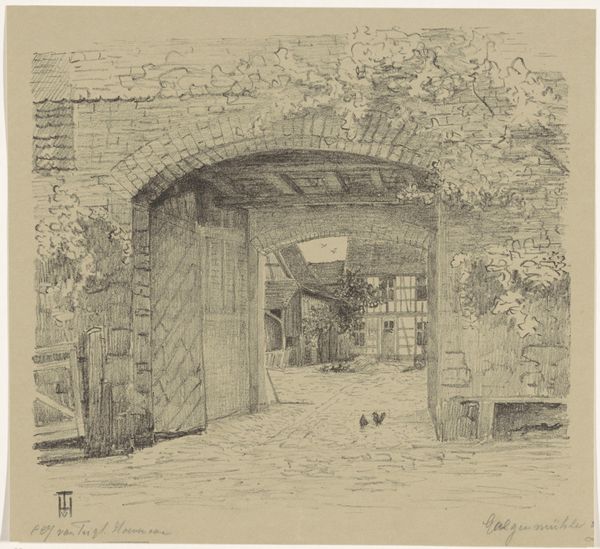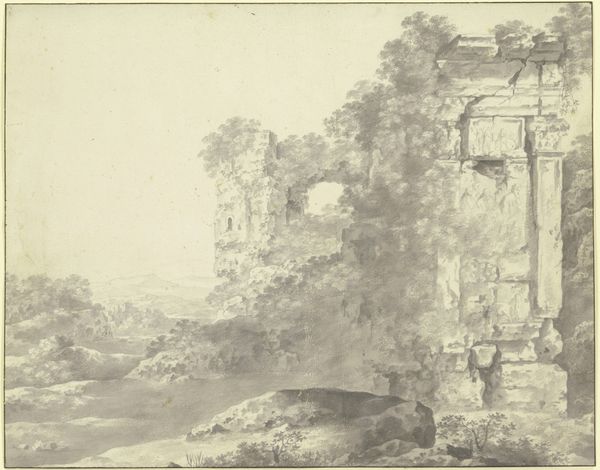
drawing, pencil
#
drawing
#
pencil sketch
#
landscape
#
etching
#
romanticism
#
pencil
#
pencil work
#
realism
Dimensions: height 257 mm, width 360 mm
Copyright: Rijks Museum: Open Domain
Karel Elias van Toulon made this pencil drawing of a dilapidated garden wall and gate sometime in the first half of the 19th century. Pencil, though humble, was the favored medium for sketches and studies in this period. It's fascinating to consider the drawing's materiality. Toulon has expertly used the pencil to capture the rough texture of the stone wall, the dense foliage, and the soft light filtering through the scene. Look closely, and you'll see how the varying pressure of the pencil creates a sense of depth and volume. The medium is also important, due to its accessibility. It allowed artists to capture scenes quickly and efficiently, like a photograph before photography became widespread. The artist's hand is evident in every stroke. The drawing is not just a representation of a place, but also a record of the artist's process, of the time spent observing and rendering this scene. Pencil allowed for the democratization of art making, making it possible to pursue art without formal training. It also gave the artist a kind of freedom to quickly capture a place in time. Ultimately, the drawing invites us to appreciate the beauty in decay.
Comments
No comments
Be the first to comment and join the conversation on the ultimate creative platform.
